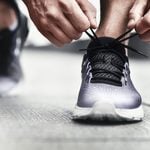Maximize Your Exercise
Here are five things every woman should know in order to maximize her workouts.
Women often face challenges that pit their body against their spirit. Understanding your body’s needs will boost your motivation to work out and sustain your desire to keep fit.
1. Time Your Exercise to Your Menstrual Cycle.
Don’t tell your health club manager, but the next time he sees you climbing like mad on the StairMaster, it’s because you’re in the latter part of your menstrual cycle. A study from the University of Adelaide in Australia found that women who exercise during this time of the month, when levels of estrogen and progesterone are highest, burn more fat for energy, leading to less exercise-related fatigue.
2. Check Your Iron Levels.
No, not the kind of iron you pump, the kind that enables your blood cells to carry much-needed oxygen to your body tissues. A study from Cornell University found that women with low levels of iron—but not low enough to be classified as anemic—find it more difficult to maintain exercise and training than women with normal levels. An estimated 16 percent of North American women have this level of iron deficiency and don’t know it. Women who are physically active, dieting, or vegetarians are particularly at risk.
Don’t despair! Supplementing with iron can double your exercise endurance compared to iron-deficient women who don’t supplement. Don’t try this on your own, however— iron should be taken under your doctor’s supervision. Good sources of dietary iron include red meat, seafood, and citrus fruit or juice taken with meals to improve absorption from iron-rich foods such as legumes, whole grains, and green vegetables.
3. Ignore the Mirrors at Gyms.
The designers of fitness clubs can’t resist throwing up a wall of mirrors anytime they install an exercise room. The assumption is that you want to watch yourself work out. But observing your own stepping, lunging, and arm swinging might actually work against you. One study found that women who exercised in front of a mirror felt less calm and more fatigued after 30 minutes of working out than those who exercised without mirrors. Some exercise gyms are now catching on and offering "reflection-free" zones. If yours doesn’t, talk to the gym manager.
4. Pass on Star-Centered Videos.
You could pack the Hollywood Bowl with all of the svelte models and skinny celebrities who are hoping you’ll buy their exercise videos. But experts say such videos may actually undermine your motivation to work out. A study at McMaster University in Hamilton, Ontario, found that people felt less confident about their fitness and less inclined to exercise in the future when they used videos featuring super-slim models with amazing muscles and revealing thongs. Oddly enough, the effect was even worse with videos featuring an ultra-slender host leading a group of plumper, normal-looking women. Apparently that scenario further emphasizes the divide between exercise divas and everyday folks.
If you want a motivating exercise video or class, researchers say you should look for a teacher you can trust. Find a teacher with a fitness background who, like the rest of us, needs to exercise in order to look great. Videos created by personal trainers and exercise physiologists, or classes taught by them, are a good bet.
5. You Can Be Both Healthy and Heavy.
Many women think they are too heavy to benefit from exercising; others get discouraged when they don’t see significant weight loss after weeks of exercise. But the most important benefit of exercise is keeping your heart healthy. And research shows that the amount of activity you get, not your weight, is the chief predictor of heart disease. One study in particular, published in 2004 in the Journal of the American Medical Association, evaluated more than 900 women, three-quarters of whom were overweight or obese. Researchers assessed them for weight, body mass index, and level of physical activity, then gave them angiograms to detect heart disease. The results were clear-cut: Weight didn’t matter, but exercise did: It wasn’t the heaviest women who showed the most evidence of heart problems, but the least active women. So get moving, whatever your size.
If you enjoyed this article, be sure to sign up for our weekly health newsletter and receive more articles on health and well-being.



